I'd like to produce a pivot table with 2 sum aggregates per pivot column. Then to the right of the pivot columns I'd like to have some total columns. Finally, the number of pivot columns is dynamic. My preferred result would look like this:
My data looks like this:
From this answer, I've gotten pretty close to solving it. Here is what I have:
SELECT *
FROM (
SELECT B.SiteID, R.BuildingID, C.*
FROM Rooms R JOIN Buildings B
ON R.BuildingID = B.BuildingID
CROSS APPLY (
VALUES(RTRIM(RoomType) + ' NASF', AreaNASF)
,(RTRIM(RoomType) + ' RSF', AreaRSF)
) C (Item,Value)
) src
PIVOT (
SUM([Value])
FOR [Item] IN ([CONFERENCE NASF], [CONFERENCE RSF], [OFFICE NASF], [OFFICE RSF], [STORAGE NASF], [STORAGE RSF])
) pvt
Which produces:
I'm getting the impression that I'll have to do the two row header outside SQL. What I need help with is how to add the total columns. Also, is there a better solution for dynamic columns other than the STUFF solution I've seen many places?
Here is the SQL to create the sample data:
CREATE TABLE Buildings (
BuildingID CHAR(12),
SiteID CHAR(12),
Name VARCHAR(100),
CONSTRAINT PK_Building PRIMARY KEY (BuildingID)
);
CREATE TABLE Rooms (
BuildingID CHAR(12),
FloorID CHAR(4),
RoomID CHAR(8),
RoomType CHAR(16),
Dept CHAR(16),
AreaNASF NUMERIC(12,2),
AreaRSF NUMERIC(12,2),
CONSTRAINT FK_Rooms_BuildingID FOREIGN KEY (BuildingID) REFERENCES Buildings(BuildingID),
CONSTRAINT PK_Rooms PRIMARY KEY (BuildingID, FloorID, RoomID)
);
INSERT INTO Buildings (BuildingID, SiteID, Name) VALUES
('100', 'Main', 'Headquarters'),
('200', 'Main', 'Technology'),
('300', 'Fleet', 'Fleet')
INSERT INTO Rooms (BuildingID, FloorID, RoomID, RoomType, Dept, AreaNASF, AreaRSF) VALUES
('100', '01', '101', 'CONFERENCE', 'FINANCE', 206.84, 207.00)
,('100', '01', '102', 'OFFICE', 'FINANCE', 100.55, 101.00)
,('100', '01', '103', 'OFFICE', 'FINANCE', 100.87, 101.00)
,('100', '02', '201', 'STORAGE', 'FINANCE', 56.15, 0.00)
,('100', '02', '202', 'CONFERENCE', 'FINANCE', 164.93, 160.00)
,('200', '01', '101', 'OFFICE', 'IT', 95.50, 96.00)
,('200', '01', '102', 'OFFICE', 'IT', 100.64, 100.00)
,('200', '01', '103', 'CONFERENCE', 'IT', 220.19, 220.00)
,('200', '01', '104', 'STORAGE', 'IT', 50.25, 0.00)
,('200', '02', '201', 'OFFICE', 'HR', 65.82, 66.00)
,('300', '01', '101', 'OFFICE', 'MAINTENANCE', 65.82, 66.00)
,('300', '01', '102', 'OFFICE', 'MAINTENANCE', 65.82, 66.00)


